Earth is located 93 million miles from the Sun, with the only planet to have life survive in it. While the rest of the solar system continues to be a mystery for NASA and other space astronauts to solve. However, with so many spacecraft and telescopes being launched into space, certain news often tends to make headlines, elaborating features similar between Earth and other Planets. As a steady compilation of them all, let’s help with the adequate.
The fifth-largest planet, ‘Earth’ in the solar system, is called the “Goldilocks planet.” Wondering from where did that name come from? While there is a story of a girl named Goldilocks and three bears. The girl in the story liked everything just in the right amount. Her porridge could not be too cold or too hot. While her bed needed to be in the middle, not too soft or hard. Similarly, everything on Earth is just right, balancing the wind, ocean, and temperature for human life.
Features Similar Between Earth And Other Planets
Earth continues to be unique, being the only place to support life. However, the universe has a list of surprises offering quite many features similar between Earth and other Planets.
Study Finds Similarities In Lightning Between Earth And Jupiter
Back in 1979, NASA’s Voyager 1, during its flyby, discovered radio wave signals similar to lightning on Earth. However, the lack of technological advancement in NASA’s Cassini, Galileo, and Voyager 1 & 2 spacecraft made it difficult for scientists to understand needful details.
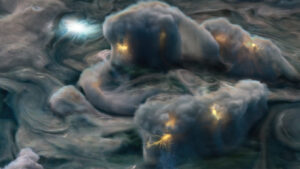
Later, in a study, Ivana Kolmašová and her team decoded thousands of snapshots collected by the Juno spacecraft of NASA. They used five years of data to work on the records of Jovian lightning, similar to the intracloud lightning on Earth.
The team also found that on Jupiter, lightning originated from large chunks of clouds near the polar region, while on Earth, one gets to see such phenomena near the equator areas.
Greenland Ice & Jupiter Moon Share Similar Feature
Second, on the list when talking about features similar between Earth and other Planets, you will get to study the ‘Parallel ice ridges,’ a feature common on Jupiter’s Moon Europa and that of the Ice sheet of Greenland. The particular phenomenon suggests a potential of water being present under the riddled pockets of the Jupiter Moon.
Further studies have shown evidence of Europa harboring a deep liquid Ocean, hidden under a shell of ice – 15 to 25 kilometers deep. Scientists are excited to reveal the factors potentially contributing to forming such ice ridges.
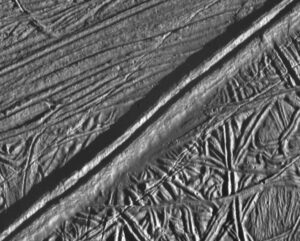
To work further, they found the true core of Greenland’s ice sheet. And as the findings suggest, the water from nearby surface lakes was drained into further layers of impermeable ice sheets. The water pockets refroze and cause fractures in the overlying ice, forcing the peaks to rise on either side.
Europa might have undergone similar of a situation. However, the Moon’s gravitational pull is comparatively less than Earth’s, forcing the water toward the surface. Thus, the ridges here are quite tall and large indeed.
Neptune Appears To Be Blue, Just Like Earth
Seen from space, Earth appears to be blue. Wondering why? The color comes from the Blue Oceans and other forms of water on the surface. However, do you know there is another distant planet to Earth that reflects similar blue light?
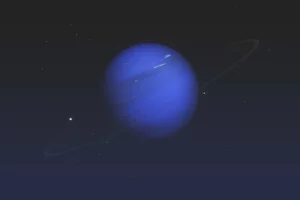
Well, it is none other than Neptune. Coming to the fact, “What makes Neptune reflect blue light?” To that question, scientists reveal that the atmosphere of Neptune comprises Helium, Methane, and Hydrogen. And Methane on the upper layer of Neptune’s atmosphere absorbs the red light it receives from the Sun. In return, it reflects the Blue light into the space.
You Get To Observe Change In Seasons In Saturn, Just Like Earth
While the Earth takes 365 days to rotate around the Sun, it is 29 years for Saturn. However, divided by days and united by the tilt in their orbital paths, Earth and Saturn have a 23-degree and 27-degree tilt in their orbits.
This causes a change of season in Saturn, much like the Earth. As Saturn continues to move around its orbit, first one hemisphere and then the other continues to move towards and away from the Sun. The planet’s poles spent nearly 15 years in winter and the other 15 years in Summer.
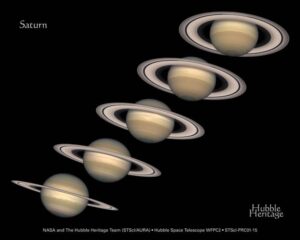
Recent images captured by NASA’s Hubble Space Telescope showcase the start of the ‘Spoke season’ in Saturn. The spokes disappear when it is near the Winter solstice or Summer in Saturn. NASA’s spacecraft Cassini has elaborated on the true wonders of Saturn in great detail. It was disposed of via a controlled fall into Saturn’s atmosphere on 15th September 2017.
Ancient Stars Shed Light On Earth’s Similarities To Other Planets
Also, a team of geochemists and astrophysicists reveal that Earth might not be a unique planet in the solar system, and many others possibly exist with similar features. As per the study’s co-author – Edward Young- multiple Rocky planets, like Earth, are roaming the universe. However, it is difficult to study planets outside the solar system. So the team analyzed the elements from asteroids and other fragments from rocky planets which orbited the white dwarf stars.
Owing to the elementary features of white dwarf stars, the team concluded these are dense and appear to be burned-out remains of regular stars. The closest dwarf star studied is 200 light-years from the Earth, while the farthest one is 665 lightyears away.
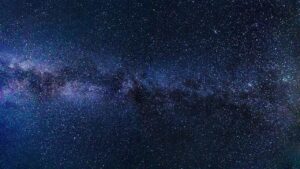
The strong gravitational pull of the stars causes Oxygen, Nitrogen, and Carbon Di Oxide (heavy elements) to sink into the interiors. The telescope cannot detect this. Now, the team has made it clear that they are observing the elements present in the atmosphere of the white dwarfs. It is easy to learn more about the bodies that had previously orbited the white dwarfs.
The team found oxidation levels among the rocky substitutes in the atmosphere of the dwarf stars, similar to that of the rocks on Earth and Mars. According to them, oxidization greatly affects the planet’s atmosphere and the rocks it makes on the surface and the core. All this together suggests the very existence of planets outside our known solar system to have Earth-like geochemistry.
So that is all about the features similar between Earth and other Planets explained accordingly. Outer space is all about learning the unknown and getting astonished daily; there is more to come.



